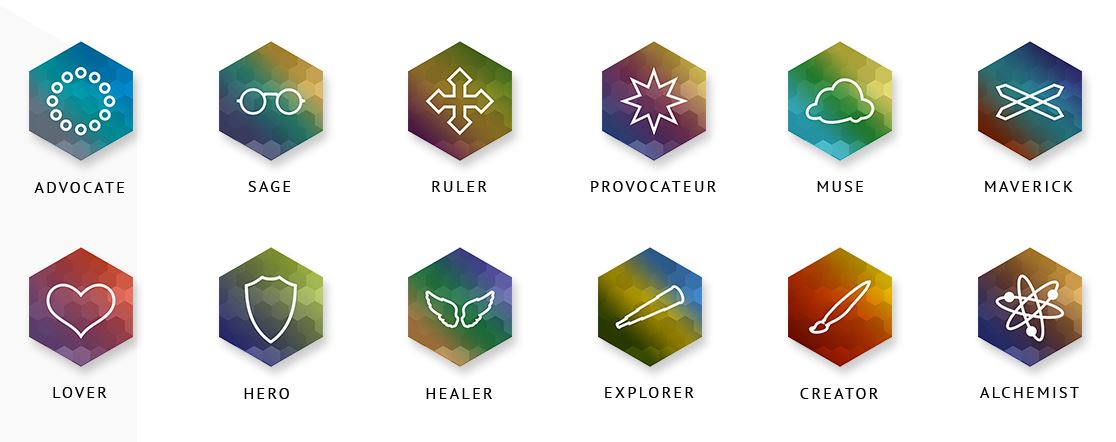Authentic Marketing is about being true to who you are when putting out digital content about you, your business, your brands, or your products and services.
This impacts any digital content, such as copywriting, advertising, sales funnels, websites, blog posts, images, videos, audio, social media, webinars and workshops (and to a certain extent, also in-person events).
For individual marketers and small businesses, Authentic Marketing is closely intertwined with the personality of the founder or whoever the front person for the business is.
In other words, if you’re a new business owner and the only one running your business, it’s about YOU – who you are, what your values, strengths and unique character traits are, and how these are communicated or appear to others.
There are two prongs to Authentic Marketing:
The first prong is staying true to your values, beliefs and principles in WHAT you communicate, market and sell, and HOW you do this.
That means being comfortable with being you, doing what comes naturally to you, and marketing products or services which are aligned with your true purpose.

For example, teaching others to make homecrafts, because you’re good at this, and have a burning desire to empower others – but also talking about this in a way which is natural for you, without being insincere, pretentious or trying to come across in a way which is just not ‘you’.
It’s my belief that there are two types of audiences – those who want some reality in who they follow, and those who follow and aspire to be someone who appears to have it all. There is room for both types.
The second prong is about being comfortable with HOW you communicate – this is closely related to the first prong, but goes a step further.
It’s about being okay with making some mistakes or leaving in your perceived flaws – in other words, it’s good if you come across in your marketing communications as ‘human’ because this means others can more easily relate to you as ‘real’.

This applies more to when you present workshops, videos or webinars though – in other words, this applies mostly to when you’re ‘on show’.
This isn’t an excuse for factual, grammatical or spelling errors in any written content, which should always be proofread and professionally presented.
When you’re a newbie, it can be difficult to identify and communicate your ‘authentic self’.
You would think it would be easy, wouldn’t you? After all, it’s you!
Quite often, new entrepreneurs feel they need to follow the advice, marketing styles and even personality traits of those who have gone before them.
You might be drawn to the popular, so-called marketing gurus, who often promise if you do it like they’ve done it, step by step, then you’ll be massively successful.
So you might try to copy them and appear to be more outgoing, use different phrases or slang, or sound more upbeat than your natural communication style in your ads, videos and marketing materials.
But, despite all your efforts, you don’t achieve the marketing successes and sales you hoped for.
Because, at the end of the day, how do you stay passionate and communicate customer benefits about your products and services if you’re pretending to be someone else?
Even worse, your audience will be able to tell.
They’ll sense that you’re nervous, too stiff, obviously ‘acting’, or insincere, or they’ll be confused with too many different communication styles in your content.
How do you know when you’re NOT being authentic?
When you’re not communicating authentically, this can result in two problems: you may be unsure how to communicate in a way which is naturally you, or unsure how to communicate in a way which speaks to your ideal audience.
1. You’re not sure how to communicate as yourself:
When this happens, it’s probably because you haven’t yet reflected on who you are, what your values are, and how you come across to others (the good and the bad). Not everyone can be young, attractive, an excellent communicator, super-friendly and naturally extroverted, and that’s fine.

An excellent tool for assisting you to pin down your core values and communication style, as well as how and what you should be communicating, in order to align with your true self and your followers and customers’ needs and wants, is Jennifer Kem’s Brand Archetype Quiz.
This detailed psychological assessment will result in a comprehensive report of the three brand/value archetypes describing your unconscious values, behaviour patterns and ideals, based on Carl Jung’s 12 archetypes, which can be used to shape your marketing text, images and other content in a way which aligns with speaking from your heart, and reaching those customers who have similar values (link below).
Benjamin Todd of 80000hours.org has put together an extremely comprehensive article, “How to identify your personal strengths“, subtitling it “A collection of the best advice and research I’ve seen” (published March 2021).
Although slightly biased towards thinking about your strengths as regards your ‘career’ (employment), much of the article will also be relevant to self-employed entrepreneurs, and it includes multiple links to other tests/tools or information for further details (link below).
2. You’re not sure how to communicate with your audience:
If this is the case, it’s likely that you haven’t yet sat down and properly identified your niche target market, or more specifically, your ‘customer avatar‘. You also need to consider how well you understand them and their needs and problems.

Hubspot, one of the longstanding marketing information websites, have published a general article on “The 5-Step Process for Finding your Business’s Ideal Niche Market” (updated January 2022).
They note that “Instead of targeting a broad population, your idea could focus on a small portion of potential customers. Narrowing your scope provides the opportunity to be the best at what you do.” The article gives examples from ecommerce (physical products), but the process is applicable to digital products and services too (link below).
Your Customer Avatar is a thorough description of ONE customer in your niche market – with comprehensive details you’ve written about that customer’s demographics, their likes and dislikes, their dreams and fears, and their problems (which you have solutions for, through your products/services).
Having thought about and written descriptions for one or more of your Customer Avatars will help you to reach out to your customers with targeted copywriting, images and other content.
Digital Marketer have put together instructions on how to go about describing your Customer Avatar – simply sign up to their newsletter and get their free Customer Avatar Worksheet to use for this (link below).
Free tools to help you overcome inauthentic marketing
Authentic Marketing is ultimately about how comfortable you feel in your own skin.
By comfortable, I’m not referring to whether you feel relaxed (or nervous) when communicating or preparing digital content.
I’m talking about how aligned you feel with any marketing content you’ve published – does it accurately reflect you, your values and personality? And do your audience feel comfortable with you and your communication style?
Your communications don’t have to be ‘perfect’ or edited to the point where your characteristic quirks have been air-brushed, re-recorded, covered or cut out.
At the same time, there shouldn’t be so many errors, flaws and mistakes that your content becomes annoying to your audience, or your main message becomes one that says ‘sloppy’, ‘lazy’ or ‘unprofessional’.
Authentic Marketing is about striking a balance between being ‘professional’ and ‘real’.
Customers can relate more easily to those who show their unique temperament including flaws – you will appear to be much more like a real person, like them. But at the same time, you’re marketing a business, so a reasonable amount of professionalism is expected.
Remember to have fun too!





